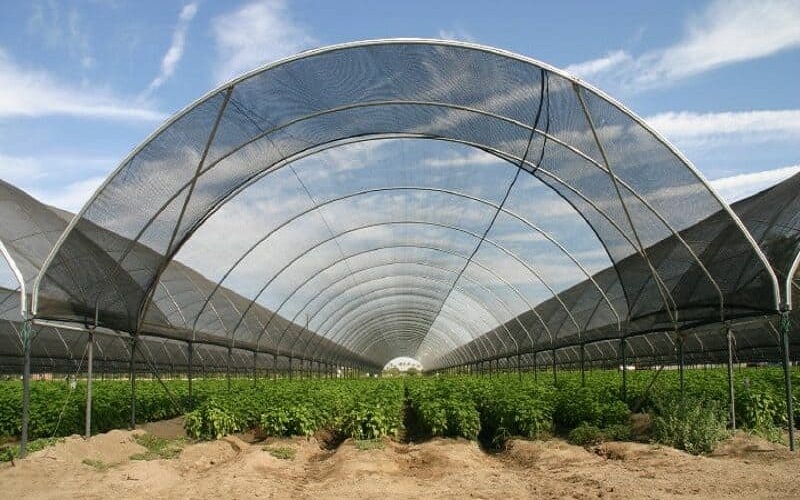In the world of modern agriculture, where innovation meets tradition, one of the most indispensable tools is agriculture nets. These versatile nets serve a myriad of purposes, ranging from protecting crops against birds through anti bird nets while mitigating the damaging effects of hailstorms. As farmers and growers seek sustainable and efficient solutions, understanding the different types of agriculture nets and their uses becomes paramount.
Agriculture nets, also known as crop protection nets, are specially designed fabrics or meshes used in farming practices to shield crops from various external threats while facilitating healthy growth. These types of nets are typically made from materials such as polyethylene, polypropylene, or nylon, chosen for their durability, strength, and resistance to environmental factors.
Types of Agriculture Nets
Anti Bird Nets
Birds can wreak havoc on crops, causing significant losses to farmers worldwide. Anti bird nets provide a simple yet effective solution by forming a barrier that prevents birds from accessing crops. These nets are usually lightweight and UV-stabilized to withstand prolonged exposure to sunlight. Anti bird nets are commonly used in orchards, vineyards, and fields to safeguard fruits, vegetables, and other vulnerable crops from bird damage.
Anti Hail Nets
Hailstorms pose a severe threat to agricultural productivity, capable of causing extensive damage to crops within minutes. These types of nets offer protection by intercepting hailstones and reducing their impact on crops. These nets are engineered to withstand the force of hailstones while allowing sufficient airflow and sunlight penetration for optimal growth. Orchards, vineyards, and open-field crops benefit greatly from the installation of anti hail nets, minimizing the risk of crop loss during unpredictable weather events.
Insect Nets
Insects represent a persistent menace in agriculture, with various species capable of inflicting damage through feeding, nesting, or transmitting diseases. Insect nets act as a barrier against these pests, preventing them from reaching crops while allowing air, water, and sunlight to permeate. These nets are available in different mesh sizes tailored to target specific insect species, ensuring comprehensive protection without hindering pollination or other essential processes. Greenhouses, nurseries, and open fields utilize insect nets to maintain crop health and minimize the need for chemical pesticides.
Shade Nets
These types of nets are designed to regulate sunlight exposure and temperature, providing shade and reducing heat stress on crops. These nets are commonly used in hot climates or during the summer months to protect delicate plants from sunburn and dehydration. Shade nets, just like anti bird nets, come in various shading percentages to accommodate different crop requirements, offering growers greater control over microclimatic conditions and promoting optimal growth.
Windbreak Nets
Windbreak nets, also known as wind protection nets, serve as barriers to mitigate the adverse effects of strong winds on crops. By reducing wind velocity and turbulence, these types of nets prevent physical damage, lodging, and loss of soil moisture. Windbreak nets are particularly beneficial for tall crops, such as maize or sorghum, vulnerable to wind-induced stress and lodging, enhancing crop stability and yield consistency.
Uses of Agriculture Nets
Protection Against Avian Threats
Anti bird nets serve as a reliable deterrent against avian pests, including sparrows, starlings, and pigeons. By covering crops with these nets, farmers can safeguard their yields from pecking, contamination, and loss, thereby preserving both quality and quantity.
Shielding from Hail Damage
The installation of anti hail nets is particularly crucial in regions prone to hailstorms, where crops are susceptible to severe damage. These nets offer a defensive barrier that reduces the impact of hailstones, preventing physical injury and minimizing yield losses.
Prevention of Insect Infestation
Insect nets play a vital role in integrated pest management strategies by excluding harmful insects from crop areas. By creating a barrier against pests such as aphids, thrips, and whiteflies, these nets contribute to healthier crops and reduce reliance on chemical pesticides, promoting ecological balance and sustainability.
Regulation of Sunlight and Temperature
Shade nets provide growers with a means to control sunlight exposure and temperature, optimizing growing conditions and preventing sun-related stress on crops. By filtering sunlight and reducing heat buildup, these nets create a more hospitable environment for plant growth, especially in regions with intense sunlight or during periods of high temperatures.
Protection from Wind Damage
Windbreak nets offer an effective solution to minimize the damaging effects of strong winds on crops. By reducing wind speed and turbulence, these nets prevent lodging, breakage, and loss of moisture, enhancing crop resilience and stability. Farmers in windy regions or areas prone to storms can significantly benefit from the installation of windbreak nets, ensuring better yields and crop quality.
Enhancing Pollination Efficiency
Certain types of agriculture nets, such as insect nets with appropriate mesh sizes, can enhance pollination efficiency by excluding unwanted insects while allowing access to pollinators like bees and butterflies. By creating a controlled environment conducive to pollination, these nets promote higher fruit sets and yield in crops dependent on insect pollination, such as fruit trees and certain vegetables.
Protection Against Frost
Frost nets, also known as thermal blankets or frost protection nets, provide insulation against frost damage by trapping heat radiated from the soil and preventing cold air from settling on crops. These nets are particularly valuable in regions prone to late spring or early fall frosts, safeguarding sensitive crops and extending the growing season.
Conclusion
Agriculture nets represent a versatile and essential tool for modern farming practices, offering protection against a range of threats including birds, hail, insects, wind, sunlight, and temperature extremes. By understanding the various types of agriculture nets and their uses, farmers can make informed decisions to optimize crop protection and enhance yields sustainably. Whether it’s shielding orchards from bird damage, safeguarding vineyards against hailstorms, regulating microclimatic conditions with shade and windbreak nets, or promoting pollination and frost protection, the strategic deployment of agriculture nets plays a pivotal role in ensuring agricultural productivity and food security for generations to come.




